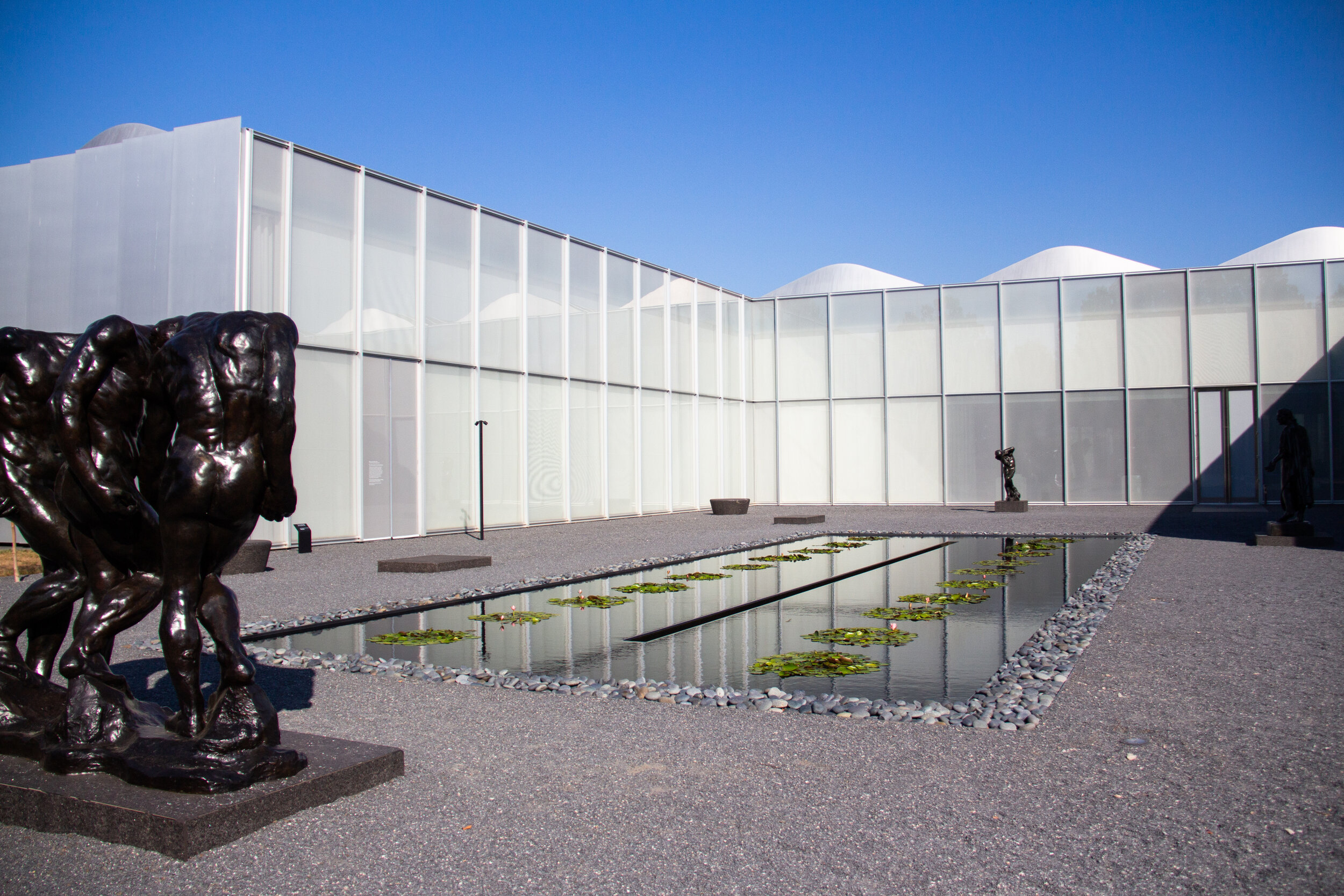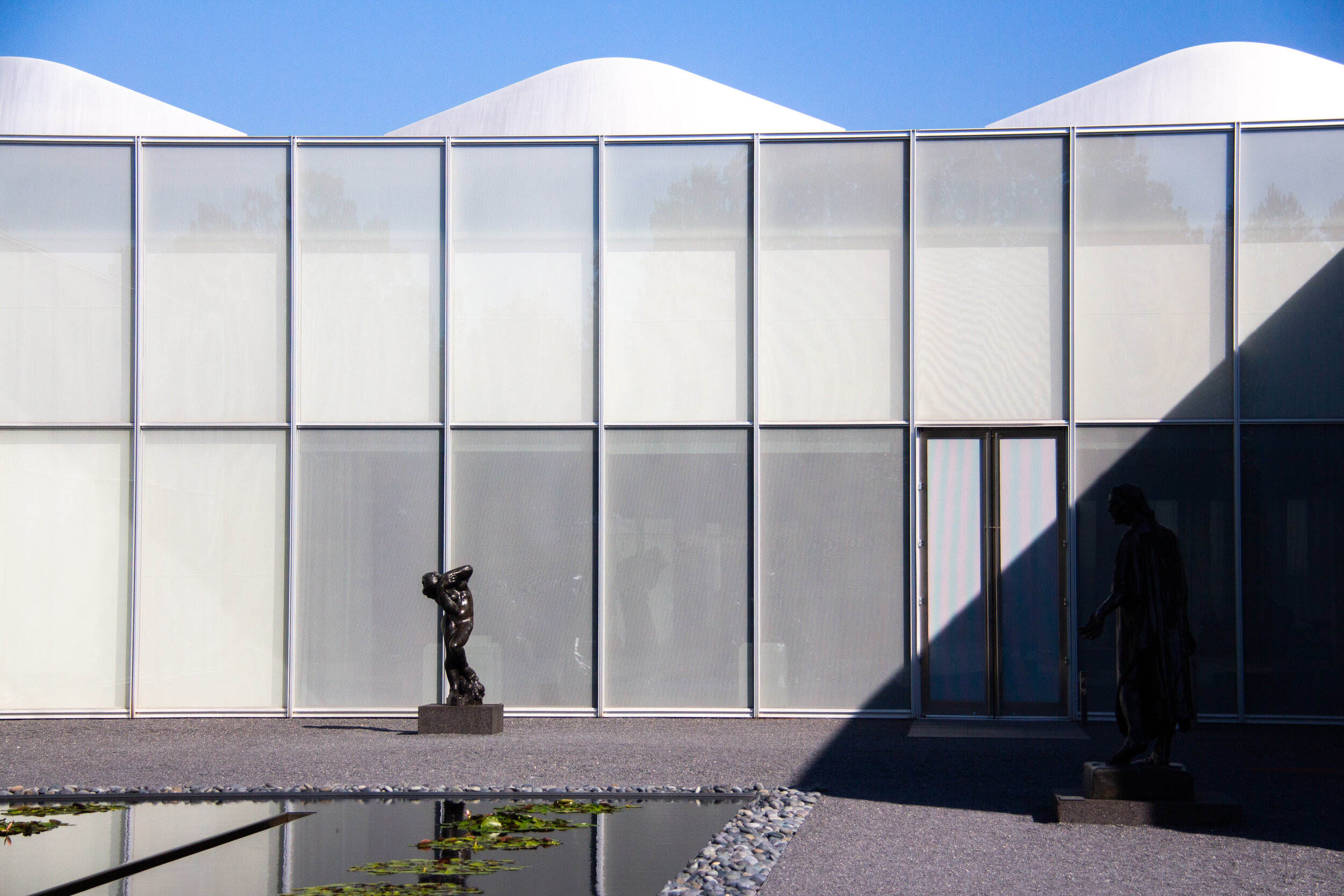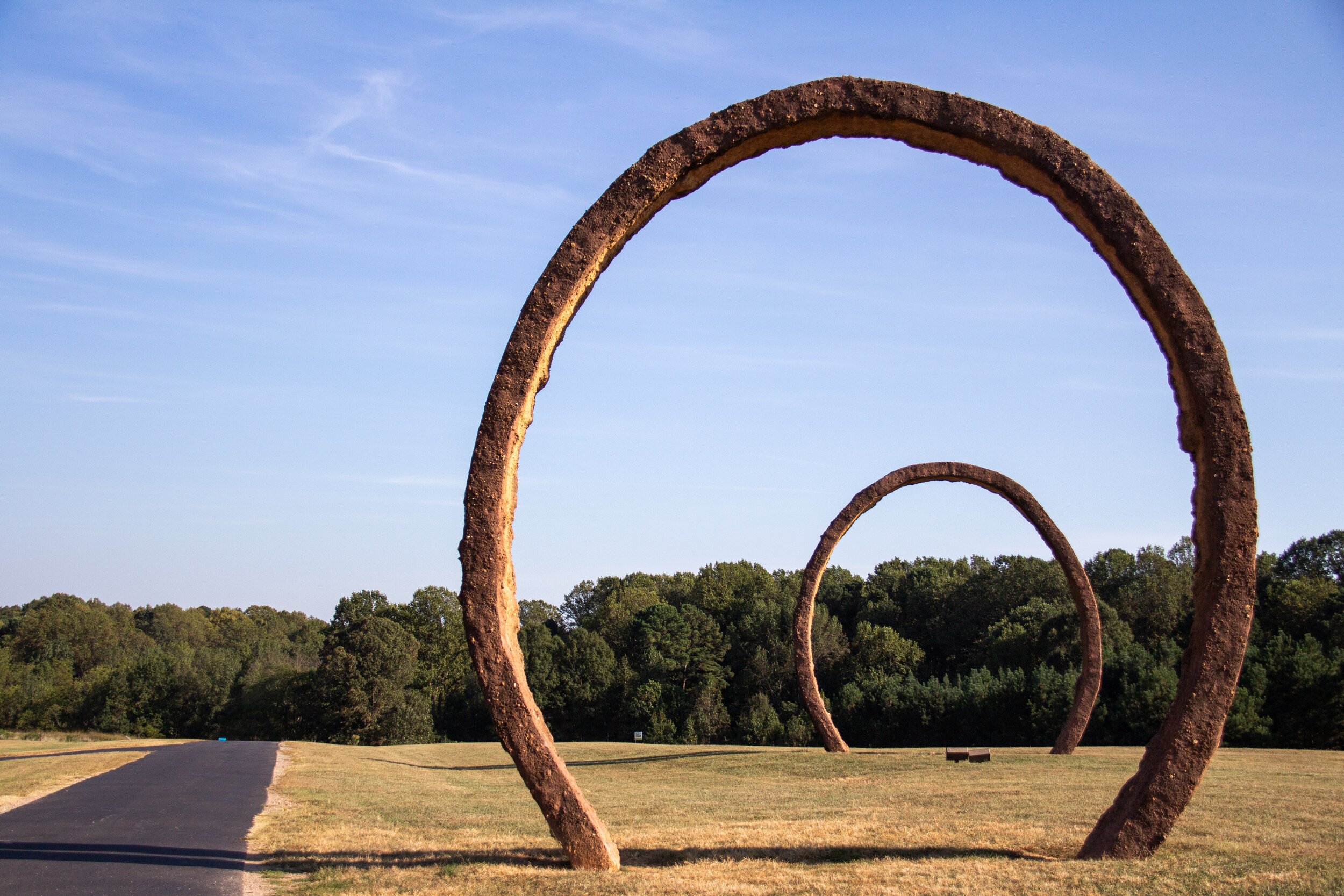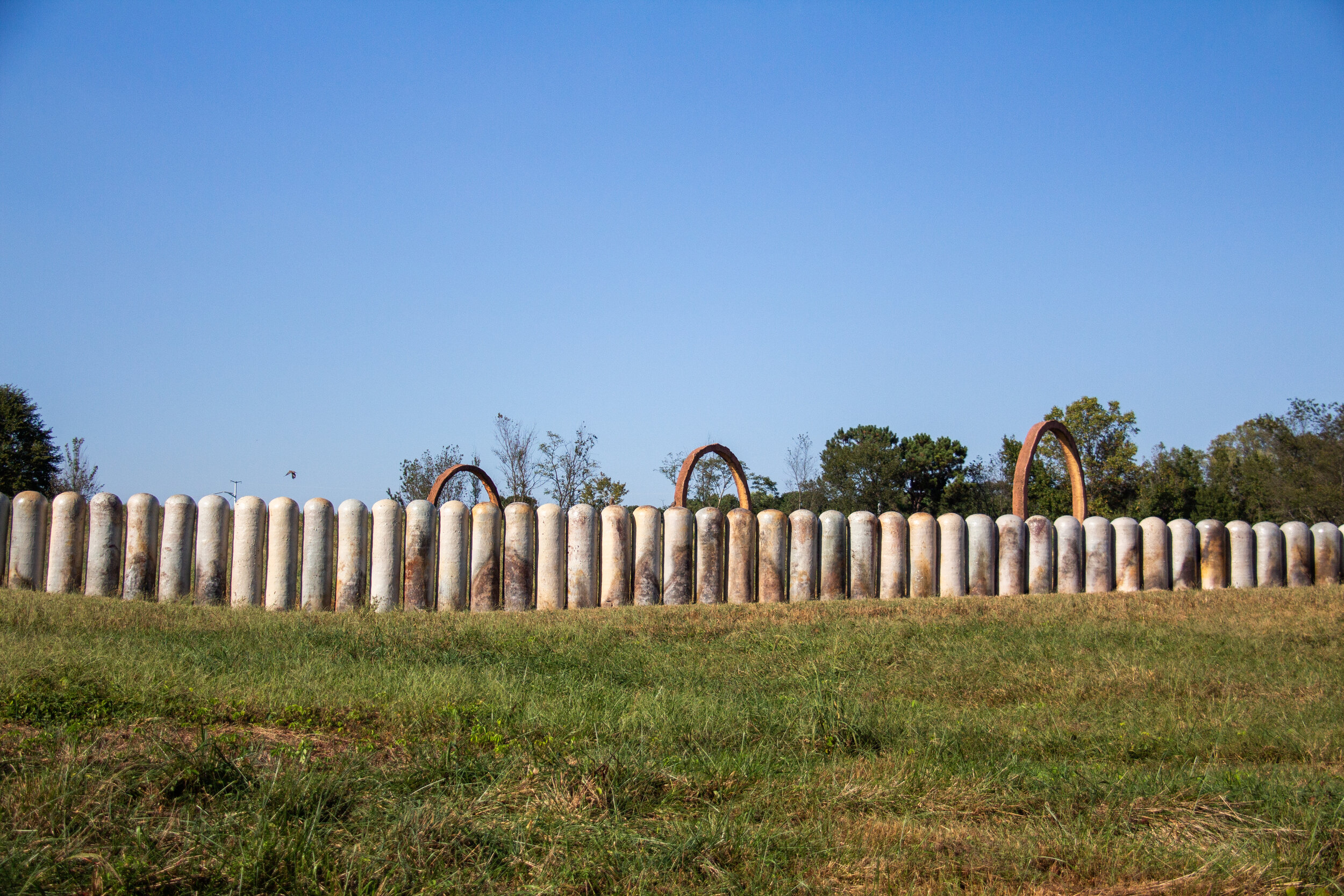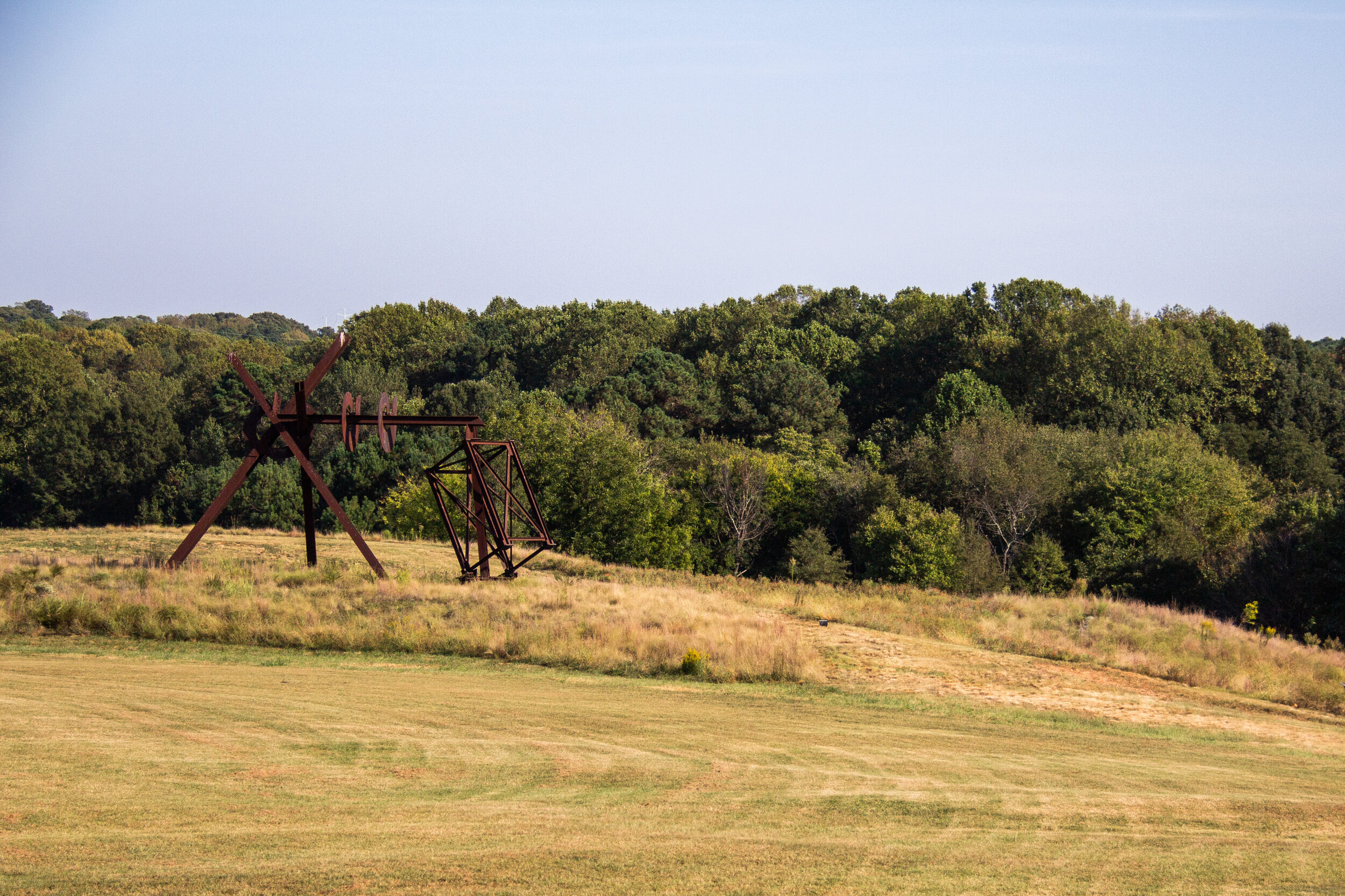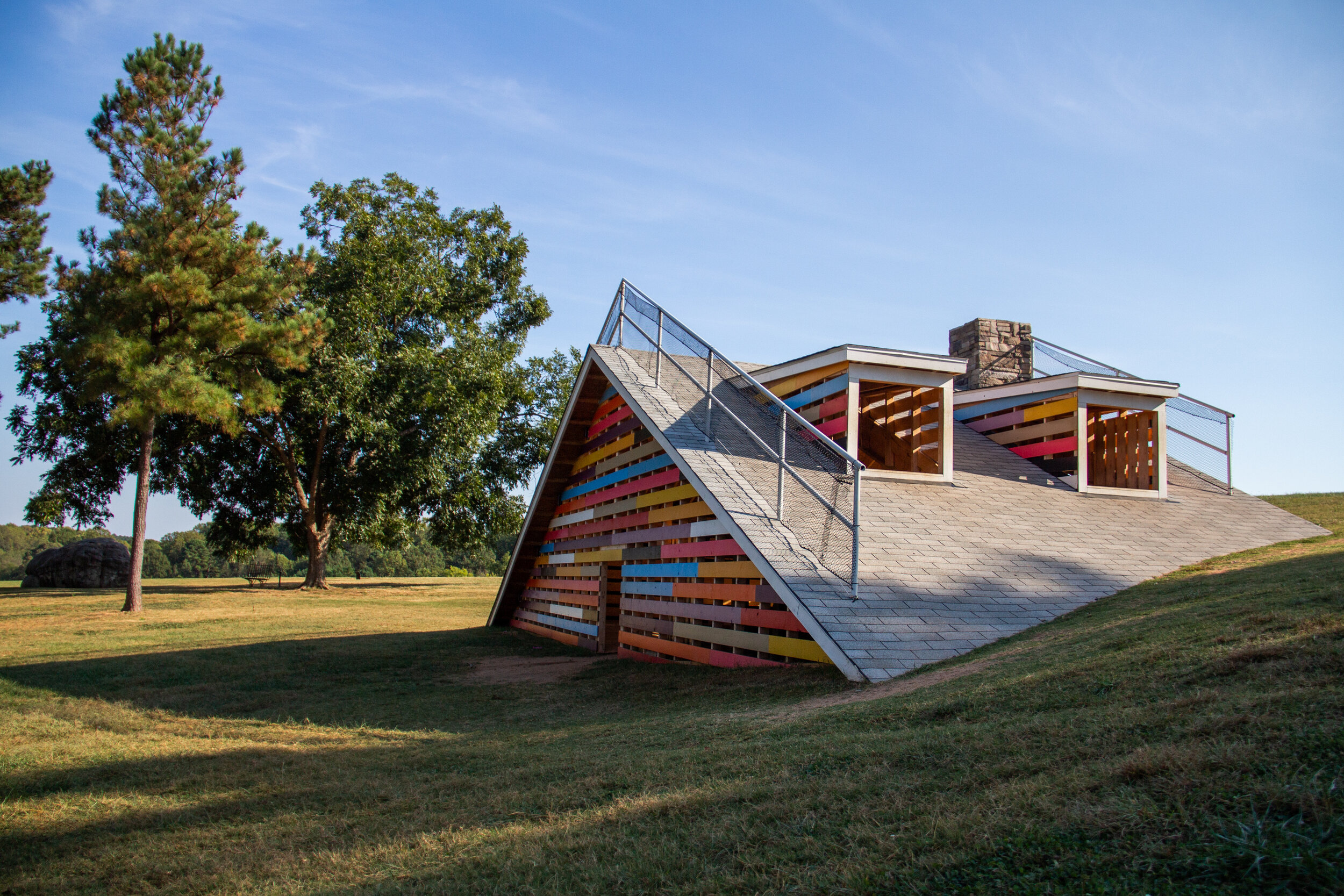Beyond Blue Ridge Road

To the unassuming car passing by on Blue Ridge Road, it is easy to miss the sculpture garden beyond the parking lot. Mark di Suvero’s giant red steel sculpture Ulalu marks the entrance to the 164-acre park comprised of over thirty outdoor sculptures, the Ann and Jim Goodnight Park at the North Carolina Museum of Art.
The range of work in the park tells the story of a century of modern sculpture and form. Sculptures from Auguste Rodin highlight early modern sculptural ventures by artists that struggled to simultaneously align and differentiate themselves from traditional sculptural depictions and practices in the late 19th and early 20th centuries. Rodin’s The Three Shades depicts three identical figures with their left arms outstretched and joined together like spokes on a wheel. The work is believed to reference Dante’s Inferno. Groundbreaking for its time and an inspiration to artists today, Rodin’s sculptures such as The Three Shades demonstrate his unique ability to evoke emotion and experiment with representation in his work.
The story of modern art continues with work by minimalist artists Ellsworth Kelly and Ronald Bladen. Concerned with sculpture in its most basic form, Ellsworth Kelly and Ronald Bladen’s geometric works challenge the viewer to draw meaning from impersonal and simple objects. The inclusion of these minimalist works exemplifies the struggle of 1950s and 60s artists to represent reality without attaching personal significance to their art.
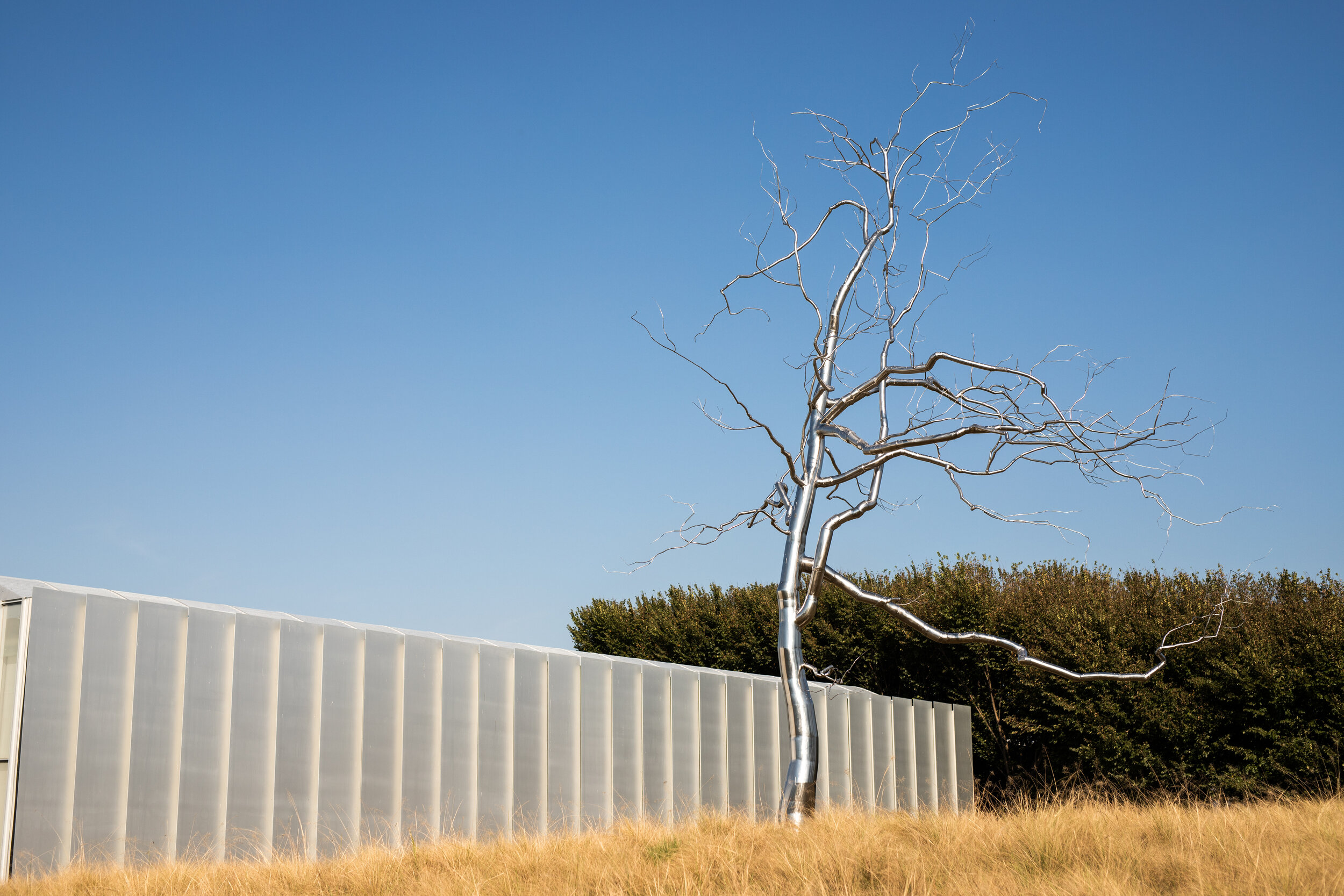
The highest concentration of work in the park comes from the 21st century. Roxy Paine, an active sculptor whose work has been exhibited by the likes of the Museum of Modern Art and the Whitney Museum, grapples with nature and artificiality in his depiction of a tree, Askew. This piece is in conversation with many of the works around the park, notably Thomas Sayre’s on-site installation Gyre. A sculpture incorporating North Carolina soil and man-made concrete, Sayre’s work complements Paine’s commentary on the role of humanity in creation.
As the dialogue around modern and contemporary art continues to evolve, the park will expand its collection of work to reflect the ever-changing art world. If you ever find yourself on Blue Ridge Road, venture beyond the parking lot to see it for yourself.

